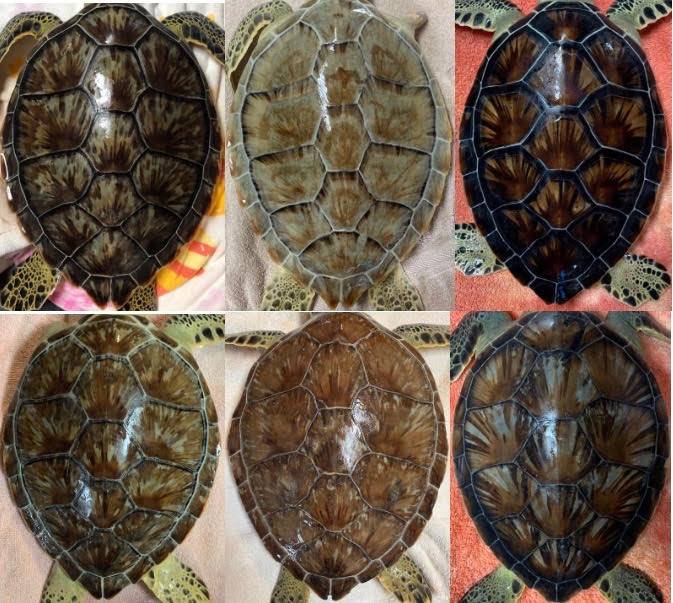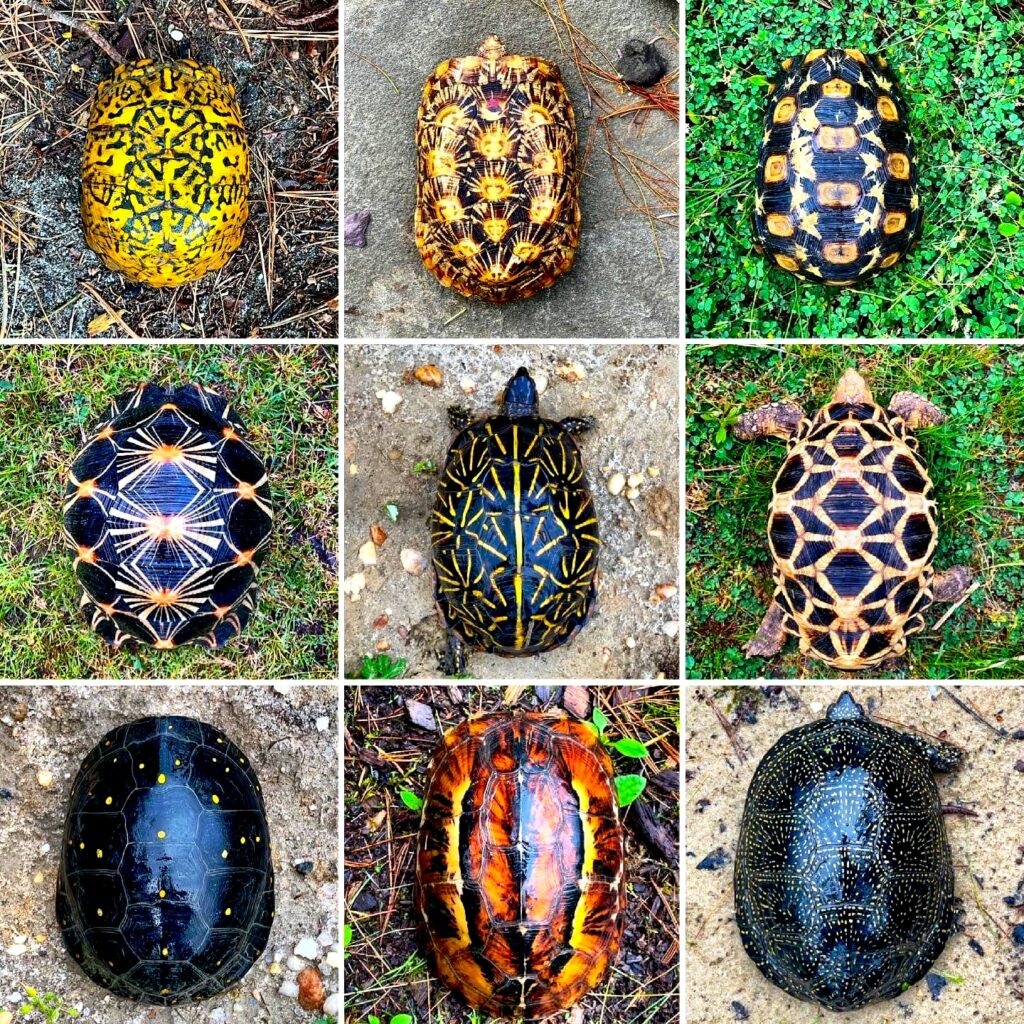
Nature’s creative prowess knows no bounds, and one striking testament to its artistic ingenuity lies in the diverse and captivating patterns adorning the shells of various turtle species. A captivating photo by Garden State Tortoise showcases nine exemplary specimens, each a unique masterpiece. From the eastern box turtle to the European pond turtle, the array of patterns is a mesmerizing display of nature’s handiwork.

The Functionality Behind Turtle Shell Patterns
Beyond their aesthetic allure, turtle shells, scientifically known as carapaces, serve a crucial dual purpose – protection and thermoregulation. These intricate patterns are not mere decorations; they play a pivotal role in helping turtles absorb and retain heat, ensuring the maintenance of a comfortable body temperature. Additionally, these designs offer effective camouflage, allowing turtles to seamlessly blend into their environments and elude potential predators.

Reveling in the Diversity of Turtle Shell Patterns
The sheer diversity of turtle shell patterns is nothing short of astonishing. From the radiating lines of the green sea turtle to the star-like markings of the Burmese star tortoise, each species boasts a distinctive design. The interplay of genetics, environment, and age contributes to the formation of these unique patterns, resulting in a breathtaking mosaic of natural artistry.

The Intricate Formation Process
The formation of turtle shell patterns is a complex and fascinating journey that commences during embryonic development. As turtle embryos grow, specialized cells called osteocytes meticulously deposit calcium salts, shaping the bony plates constituting the shell. These osteocytes arrange themselves in specific configurations, giving rise to the mesmerizing designs that characterize turtle shells.

The Scientific and Cultural Significance
Far beyond being aesthetically pleasing, turtle shell patterns carry profound scientific significance. Studying these intricate designs offers scientists valuable insights into turtle biology, evolution, and ecology. Moreover, turtle shells have transcended the realm of science, becoming cultural symbols featured in art and literature throughout centuries.

Safeguarding Turtles and their Artistic Shells
Regrettably, turtles face an array of threats, including habitat loss, poaching, and pollution, putting both the creatures and their unique shell patterns at risk. It is imperative that concerted efforts be made to protect turtles and their habitats, ensuring the preservation of these natural marvels.
Preserving Nature’s Artistry

The intricate patterns gracing turtle shells stand as a testament to nature’s unparalleled diversity and boundless creativity. Beyond their aesthetic appeal, these patterns fulfill essential functions, underscoring their significance in the broader ecosystem. As stewards of the environment, it is our responsibility to champion the cause of turtle conservation, safeguarding these enchanting creatures and the awe-inspiring beauty of their natural canvases for generations to come.

Leave a Reply